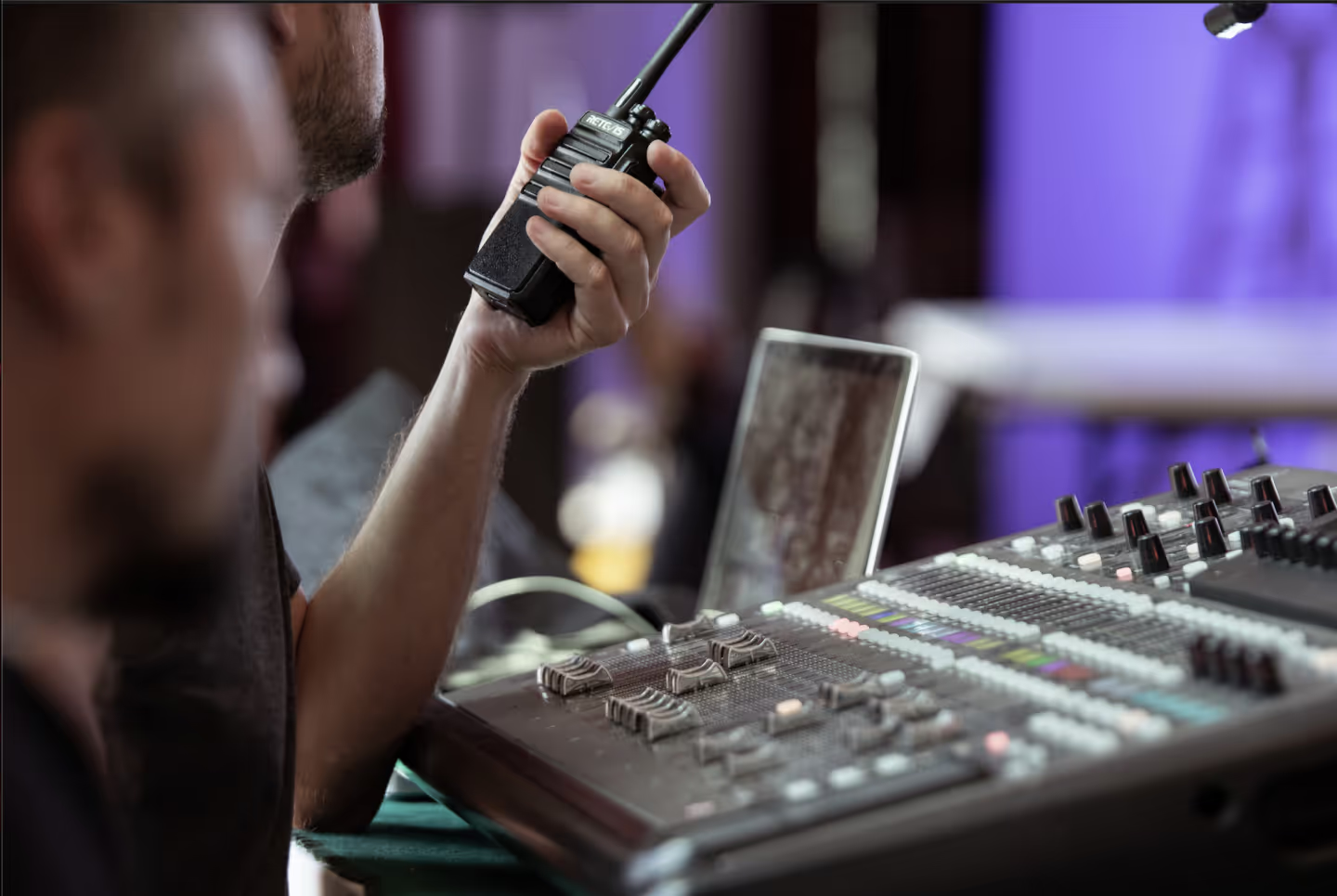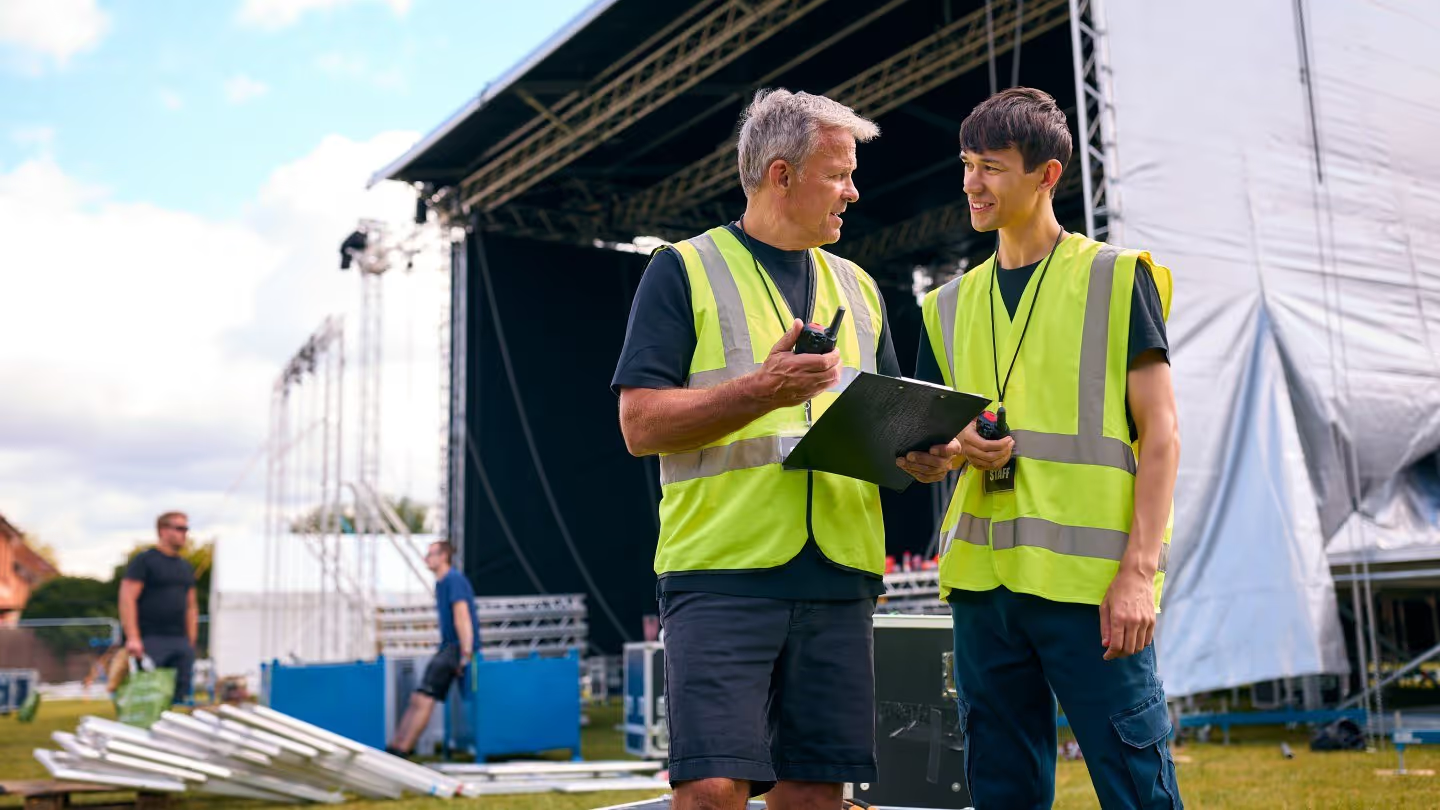Mastering Event Communication: A Straightforward Guide to Success

Effective communication is the backbone of any successful event, whether it's a small gathering or a large conference. In today's fast-paced world, clear and concise communication can make or break the experience for both organizers and attendees. Understanding the nuances of event communication ensures that everyone involved is on the same page, leading to a smoother operation and a more enjoyable experience. In this guide, we will delve into practical strategies and tips to help you master communication for events, ensuring that your message is delivered effectively and efficiently. Whether you're a seasoned event planner or just starting out, this straightforward guide aims to equip you with the various communication tools you needed to communicate with confidence and clarity.
Understanding Event Communication
Defining Event Communication
Event communication involves the strategic exchange of information between organizers, attendees, and stakeholders before, during, and after an event. It encompasses every interaction, from official announcements to informal updates, aiming to create a cohesive experience. Effective event communication ensures that everyone involved is informed, reducing misunderstandings and enhancing engagement. It covers various channels, including emails, social media posts, and face-to-face interactions, each tailored to suit the audience's needs. The goal is to convey clear messages that align with the event's objectives, whether it's to inform, engage, or inspire. By defining and understanding what event communication entails, organizers can create a roadmap for disseminating information efficiently. This ensures that all parties are aligned with the event's goals and logistics, fostering a more organized and successful event. Recognising the integral role of communication helps in anticipating challenges and addressing them proactively.
Importance of Clear Messaging
Clear messaging is crucial in event communication as it sets the tone and expectations for all involved. When messages are straightforward and easy to understand, it minimizes confusion and potential misinterpretations. Attendees should be able to quickly grasp essential details such as the event's purpose, schedule, and location. This clarity helps attendees to plan accordingly and participate fully. Additionally, clear messaging builds trust and credibility with your audience. It shows that you value their time and are committed to providing a seamless experience. For organizers, clear communication aids in coordinating with vendors, speakers, and staff, ensuring that everyone knows their roles and responsibilities. It also helps in crisis management, with a communication timeline enabling quick and effective responses to any issues that arise. Ultimately, clear messaging contributes to a positive experience, leaving a lasting impression and encouraging future attendance and engagement.
Common Challenges in Event Communication
Event communication can face several challenges that may impact its effectiveness. One significant challenge is information overload. In the digital age, attendees are bombarded with messages, which can lead to important details being overlooked. Another issue is the inconsistency of communication. Discrepancies in information across different channels can confuse participants and undermine the event website or organizer's credibility. Language barriers and cultural differences can also pose challenges, especially in international events, where messages might not translate well or resonate with diverse audiences. Additionally, technical problems, such as issues with email servers or social media platforms, can disrupt the flow of communication. Time constraints often pressure organizers to rush communications, resulting in errors or omissions. Finally, managing expectations is a common hurdle, where what is communicated might not align with the actual event experience. Addressing these challenges involves careful planning, regular updates, and using feedback to refine communication strategies.
Planning Your Communication Strategy
Identifying Your Audience
Identifying your audience is a foundational step in crafting an effective communication strategy for any event. Understanding who your attendees are helps tailor messages to meet their needs and expectations. Start by analysing demographic information such as age, gender, and location, as well as psychographic details like interests and behaviours. Consider the different groups involved in mobile events, including attendees, sponsors, speakers, and vendors, each with unique requirements. For instance, attendees may need logistical information, while sponsors might be more interested in brand visibility opportunities. Segmenting your audience allows for targeted communication, ensuring that each group receives relevant and engaging content. Furthermore, understanding your audience's preferred communication channels, whether email, social media, or direct mail, enhances message delivery. By identifying your audience accurately, you create a communication plan that resonates, increases engagement, and builds stronger connections, ultimately contributing to the event's success.
Setting Clear Objectives
Setting clear objectives is crucial for a successful communication strategy. Objectives provide direction and ensure that all efforts align with the event's goals. Begin by defining what you want to achieve with your next communication plan, whether it's to inform, persuade, or engage your audience. Objectives should be specific, measurable, achievable, relevant, and time-bound (SMART). For example, an objective might be to increase event registration by 20% in three months through targeted email campaigns. Having clear objectives helps in prioritising tasks and allocating resources efficiently. Additionally, it allows you to evaluate the effectiveness of your communication efforts, providing insights for future improvements. Clear objectives also ensure consistency across all communication channels, reinforcing the event's message and purpose. By establishing well-defined goals, organizers can maintain focus and drive the communication strategy towards achieving desired outcomes, contributing to the overall success of the event.
Crafting Your Message
Crafting your message is a pivotal aspect of your communication strategy, as it directly influences how your audience perceives the event. Start by defining the core message that aligns with your objectives and resonates with your target audience. This message should be clear, concise, and compelling, capturing the essence of the event and the benefits for attendees. Use language and tone that reflect the event's nature, whether formal or casual, ensuring consistency across all communication platforms. Personalisation can enhance engagement; address your audience's needs and interests directly to make the message more relatable. Additionally, consider the timing of your messages to maintain interest and anticipation leading up to the event. Effective messages often incorporate a call to action, guiding the audience on the next steps, such as registering or sharing the event. By carefully crafting your message, you create a strong connection with your audience, driving participation and enthusiasm for your event.
Effective Communication Channels
Choosing the Right Medium
Choosing the right medium for your event communication plan is essential to effectively reach and engage your audience. Different channels offer varied advantages and cater to diverse audience preferences. Email, for instance, is ideal for detailed information and formal communication, enabling direct contact with attendees. Social media platforms like Facebook, Twitter, and Instagram are excellent for real-time updates and engaging a broader audience through visuals and interactive content. For more personal engagement, consider using messaging apps or SMS, which provide direct and immediate communication. Websites and event apps can serve as central hubs for all event-related information, offering easy access to schedules and updates. When selecting a medium, consider the audience's habits and the type of message being conveyed. Additionally, ensure that the chosen channels are integrated, providing a seamless communication experience. By selecting the appropriate mediums, organizers can maximize reach, enhance engagement, and ensure that the event communication strategy is executed effectively.
Leveraging Social Media Platforms
Leveraging social media platforms is a powerful way to enhance event communication and engagement. Platforms such as Facebook, Instagram, Twitter, and LinkedIn offer diverse opportunities to reach a wide audience with ease. Each platform has unique features that can be utilized to promote the event and interact with attendees. For instance, Facebook Events can help with registration and reminders, while Instagram Stories offer a visually engaging way to share updates and behind-the-scenes content. Twitter is ideal for real-time post event communication timeline well, providing quick updates and fostering conversation through hashtags. LinkedIn is particularly effective for professional events, enabling networking and sharing industry insights. To effectively leverage these platforms, tailor content to suit each one's audience and style. Encourage interaction by creating shareable content and engaging directly with followers. Monitor feedback and promptly respond to queries to build a community around the event. By strategically using social media, organizers can boost visibility, increase participation, and create a more interactive experience.
Utilizing Email Marketing
Utilising email marketing is a critical component of an effective event communication plan, offering a direct line to your audience for delivering detailed information. Emails provide a structured way to share important updates, reminders, and personalized content with attendees. Start by segmenting your email list into categories such as prospective attendees, registered participants, and past attendees to ensure targeted communication. Craft engaging subject lines and concise content that captures the reader's attention and conveys the event's key messages. Incorporate clear calls to action, guiding recipients towards registration, sharing the event, or accessing additional resources. Emails also allow for branded content that aligns with the event's theme, enhancing recognition and interest. Automated email sequences can manage communication flow, from initial invitations to post-event follow-ups, ensuring timely engagement. By effectively utilising email marketing, organizers can nurture relationships, boost attendance, and maintain a consistent communication presence leading up to the event.
Engaging Your Audience
Personalising Your Approach
Personalising your approach in event communication can significantly enhance engagement and foster a deeper connection with your audience. Personalisation involves tailoring content and interactions based on the preferences and behaviours of attendees. Start by gathering relevant data, such as past interactions, preferences, and demographics, to customize your messages. Personalized emails that address recipients by name and reference their interests or past events can improve open rates and engagement. Additionally, offering customized content, such as personalized agenda recommendations or exclusive offers, can make attendees feel valued and more invested. Utilize tools like CRM systems to track and manage audience preferences, enabling more targeted communication. Social media interactions can also be personalized by responding to comments and messages in a way that acknowledges the individual's input. By adopting a personalized approach, organizers can create a more meaningful experience for potential attendees, encouraging participation and loyalty, which ultimately contributes to the event's success.
Encouraging Audience Interaction
Encouraging audience interaction is vital for creating an engaging and dynamic event experience. Interactive elements make attendees feel involved and valued, increasing their overall satisfaction. Start by incorporating interactive tools such as live polls, Q&A sessions, and discussion forums, which allow attendees to actively participate and express their opinions. Social media can also play a role; create event-specific hashtags to facilitate conversations and engage attendees to share experiences. During presentations, encourage speakers to engage with the audience through questions and interactive content. Offering networking opportunities, both online and in-person, can also foster connections among attendees, enhancing their event experience. Incentivize participation with rewards or recognition for contributions, such as sharing insights or asking questions. Moreover, prompt responses to audience interactions, whether questions or comments, demonstrate attentiveness and appreciation. By prioritising audience interaction, organizers can create a more immersive and memorable event, encouraging continued engagement and a sense of community.
Gathering Feedback for Improvement
Gathering feedback is an essential part of engaging your audience and enhancing future events. Feedback provides valuable insights into what worked well and what areas require improvement. Start by designing surveys or feedback forms that are concise and easy to complete. Focus on key aspects of the event, such as content, logistics event technology, and overall experience, to gather comprehensive insights. Encourage honest and constructive feedback by ensuring responses are anonymous, which can lead to more candid comments. Offer multiple channels for feedback, such as post-event surveys, email follow-ups, or social media polls, to accommodate different preferences. Consider incorporating open-ended questions to capture detailed opinions and suggestions. Analysing this feedback allows organizers to identify trends and areas for enhancement. Communicate any changes or improvements made based on feedback to demonstrate responsiveness and commitment to quality. By effectively gathering and acting on feedback, you can continuously improve your events, ensuring a better experience for future attendees.
Measuring Success and Improvement
Analysing Communication Outcomes
Analysing communication outcomes is crucial to understanding the effectiveness of your event strategies and identifying areas for improvement. Begin by setting measurable indicators aligned with your communication objectives, such as email open rates, social media engagement, and attendee participation levels. Collect data from various channels and platforms to get a comprehensive view of your communication performance. Use analytics tools to assess metrics like reach, engagement, and conversion rates, providing quantitative insights into how well your messages resonated with the audience. Qualitative feedback, such as survey responses and comments, can also offer deeper understanding of audience perceptions and experiences post event communication plan. Identify patterns and trends in the data to determine which communication strategies were successful and which need refinement. Regularly reviewing these outcomes enables organizers to make informed decisions and adapt strategies for future events. By thoroughly analysing communication outcomes, you can enhance engagement, improve audience satisfaction, and drive continued success in your event planning efforts.
Adjusting Strategies Post-Event
Adjusting strategies post-event is essential for continuous improvement and ensuring future success. After analysing communication outcomes and gathering feedback, identify key areas where changes are necessary. Reflect on the objectives set prior to the event and assess whether they were met. Consider both quantitative data, such as attendance rates and engagement metrics, as well as qualitative insights from attendee feedback. Use this information to pinpoint what worked well and what did not. Develop an action plan to address any shortcomings and enhance strengths. This might involve refining communication techniques, exploring new channels, or improving audience engagement strategies. Ensure that lessons learned are documented and shared with the entire event planning team, fostering a culture of learning and adaptation. By systematically adjusting strategies post-event, organizers can build on their successes, mitigate past issues, and enhance the overall quality of future events, ultimately leading to more effective and satisfying experiences for all participants.
Continuous Learning and Adaptation
Continuous learning and adaptation are vital for maintaining the effectiveness of event communication strategies. The landscape of event planning, communication methods and audience expectations constantly evolves, requiring organizers to stay informed and flexible. Engage in regular professional development, such as attending workshops, webinars, or industry conferences, to keep abreast of the latest trends and technologies. Encourage feedback from your team and stakeholders, fostering an open environment for sharing insights and experiences. Analyse past events to identify patterns and lessons that can inform future planning. Adopt a mindset of experimentation, willing to trial new strategies and refine existing ones based on outcomes. Embrace technological advancements that can enhance communication and engagement, such as innovative event management software or interactive platforms. By committing to continuous learning and adaptation, organizers can ensure their communication strategies remain relevant and effective, leading to more successful events and improved attendee satisfaction. This proactive approach ultimately strengthens your ability to meet and exceed audience expectations.
Good communication starts with you
When you’re planning an event, you’ll want to make sure all your internal communication is up to par. Rentman allows you to gather all your data, including quotes, crew schedules, equipment lists, and more so that you’re always starting every event project prepared and ready for anything.
To learn more about how Rentman can support your event planning business, book a demo with one of our pros.
FAQ
Frequently asked questions
No items found.
Previous blog posts

Boost Your Team's Efficiency: Effective Communication Strategies for AV, Events, and Media Production
Boost Your Team's Efficiency: Effective Communication Strategies for AV, Events, and Media Production


